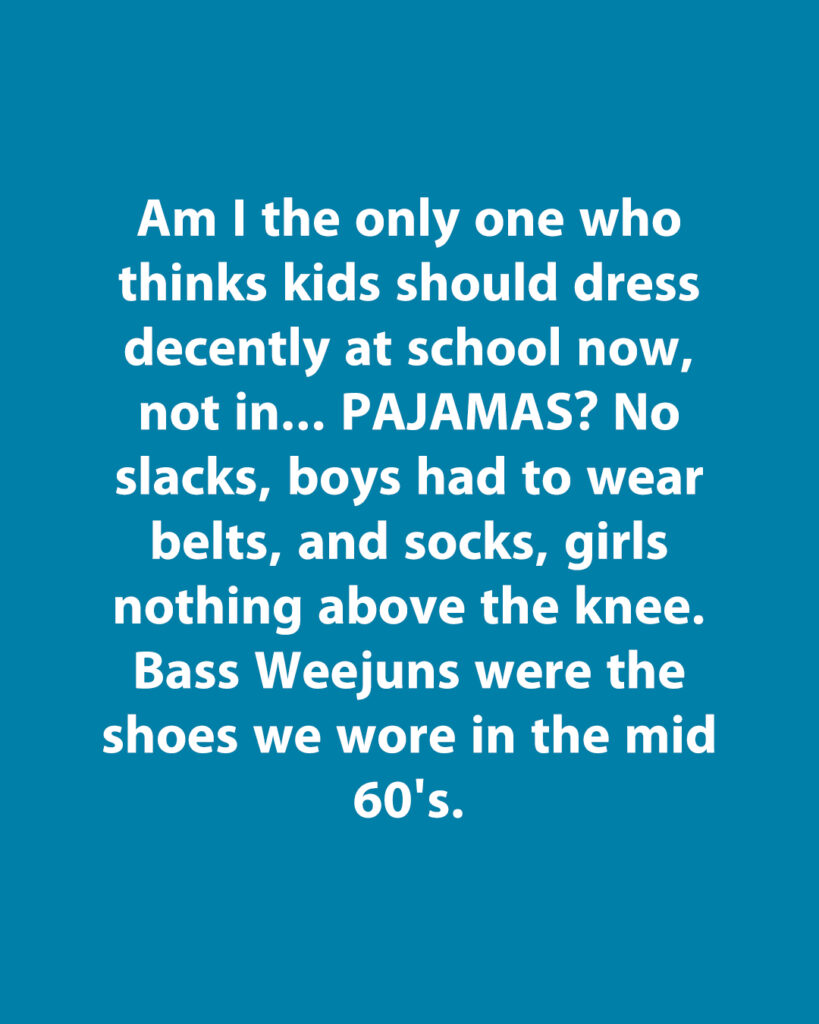In the mid-1960s, school attire reflected a culture of discipline, respect, and preparation. Boys wore slacks with belts and socks, while girls adhered to modest hemlines—nothing above the knee. Bass Weejuns, the iconic penny loafers, weren’t just shoes; they were symbols of pride, polish, and readiness. Dressing well was part of the educational ethos: you dressed for success because school was serious business.
Fast forward to today, and the landscape has shifted dramatically. Pajamas, yoga pants, and oversized hoodies have become common classroom wear. While comfort and self-expression are valid priorities, many parents and educators worry that the erosion of dress standards may reflect a broader decline in discipline and focus. Clothes, after all, influence mindset. A well-chosen outfit can boost confidence, signal respect for the learning environment, and prepare students mentally for the day ahead.
Psychologists argue that clothing choices affect self-esteem and behavior. When children dress with intention, they often carry themselves with more pride and engage more actively in class. But the debate isn’t just about nostalgia—it’s about balance. Can we honor individuality while still encouraging students to dress with purpose?
Some schools have implemented dress codes that aim to strike this balance: banning pajamas, enforcing fingertip-length skirts, and requiring belts if pants have loops. These rules aren’t about suppressing style—they’re about teaching students that how you present yourself matters.

Ultimately, the question isn’t whether pajamas are inherently bad. It’s whether we’ve lost sight of the deeper message behind dressing decently: that school is a place of growth, respect, and preparation for the real world. Maybe it’s time to revisit that mindset—not with rigid rules, but with thoughtful guidance.


